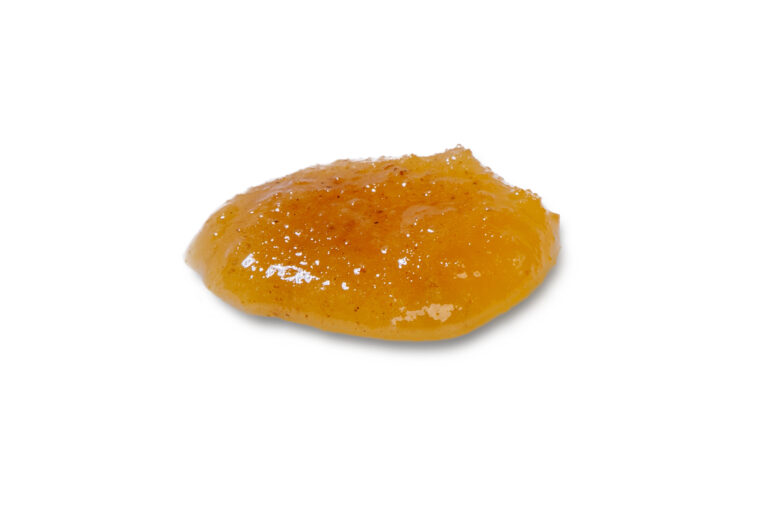Exotic honey varieties

Thanks to ever-increasing globalisation, the market is offering more and more products that either come from distant countries or are particularly rare. We used to buy honey exclusively from the local beekeeper or from the corner shop. Today, all it takes is a click of the mouse on a website, and just a few days later we can look forward to unusual and exotic honey varieties. We don’t just use them in the kitchen or as a delicious spread for breakfast rolls.
Exotic honey varieties have also long since found their way into cosmetics. And with good reason: exotic honeys are considered a true miracle weapon, especially in facial care. They make the skin supple and soft, moisturise it and even have antibacterial properties. Exotic honeys are also often used to heal wounds. To ensure that they are truly germ-free, they are usually irradiated. In principle, however, honey is not very favourable for germs.
An important point when using honey for wound healing or in cosmetics is the glucose oxidase. It is thoroughly analysed before processing. But what is it all about?
Exotic honey varieties and glucose oxidase
Glucose oxidase occurs naturally in honey. The bees are responsible for this. They add the enzyme to the nectar with their saliva. In this way, bactericidal hydrogen peroxide is produced. Glucose oxidase is initially inactive in the finished honey. The production of H2O2 only starts when the honey is diluted, whereby the optimum temperature is 37 degrees Celsius. If the honey is diluted accordingly, an effective H2O2 concentration is usually achieved after a short time. The following principle applies: the higher the glucose oxidase activity in a honey, the faster and better hydrogen peroxide can be formed. However, concentrations that could be toxic to humans are not reached.
Scientists point out that not every honey is equally suitable for miracle healing and that the antibacterial or disinfectant effect can sometimes be lost. However, a relatively simple procedure can be used to easily and reliably determine whether a honey accumulates hydrogen peroxide after dilution.
Exotic types of honey and their benefits
Acacia honey
Acacia honey is extremely sweet, but still mild in flavour and very light in colour. The fructose content is significantly higher than the glucose content. It therefore has virtually no tendency to crystallise, remains liquid for a very long time and comes primarily from Eastern Europe. Like many other exotic honeys, acacia honey is very effective against colds and coughs. This is due to ingredients such as vitamin C and serotonin, as well as various minerals, trace elements and inhibins.
Chestnut honey
There are also exotic types of honey that are much darker than acacia honey. These include chestnut honey. It has a slightly bitter aftertaste, which is due to the tannin it contains, and is very popular in cooking. Chestnut honey has an impressive antioxidant effect and protects the body and skin from free radicals. It can fight inflammation, prevent the spread of harmful bacteria and is even said to slow down the development of cardiovascular disease. It is also very suitable for treating minor wounds such as scratches or superficial cuts. In many cases, the country of origin is Italy.
Eucalyptus honey
Eucalyptus honey, which is also quite dark, proves that exotic honey varieties can come from all over the world. This flavoursome delicacy is usually sourced from South America, sometimes also from Australia, and is considered extremely rare. Exotic honeys such as eucalyptus honey have been valued for centuries as a household and medicinal remedy. In this case, the effect is due to the high content of eucalyptus oil. The honey is just as helpful against colds as it is against urinary tract infections and has antibacterial, antifungal and antiviral properties. Thanks to hydrogen peroxide, it also has an antiseptic effect. According to recent studies, exotic honeys such as eucalyptus honey can even kill cancer cells. The key ingredient here is tricetin. However, the corresponding preclinical findings are not yet comprehensive enough and should therefore be treated with caution.
Yucatan honey
When we think of exotic honeys, Yucatan honey definitely occupies a special position. It comes from the Mexican peninsula of the same name. One particular quality stands out in particular: Yucatán Dzidzilche. This variety is also known as Maya honey. It is obtained from the nectar of the dzidzilche bush, a pretty shrub with delicate white flowers. The flavour is intense, floral and has a subtle lilac note. Yucatan honey is golden to amber in colour and liquid. It was already a valuable remedy for the Mayas and is still used today for a wide variety of applications.
Exotic honey varieties as the basis for high-quality, innovative cosmetics
Exotic honeys are not only a culinary delight and a great way to add that certain something to dishes, they also have valuable healing powers. Its antiseptic and antibacterial properties are particularly noteworthy. Honey is also a completely natural moisturiser that gives our skin elasticity and protects the skin cells. This is why exotic honey varieties are particularly suitable for facial care. Cosmacon will be happy to advise you in more detail on the subject of exotic honeys!
Literature: Bee Products in Dermatology and Skin Care.
Kurek-Górecka A, Górecki M, Rzepecka-Stojko A, Balwierz R, Stojko J.Molecules. 2020 Jan 28;25(3):556
An updated review of functional ingredients of Manuka honey and their value-added innovations.
Wang S, Qiu Y, Zhu F.Food Chem. 2024 May 15;440:138060